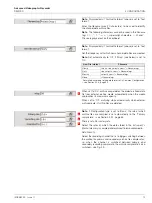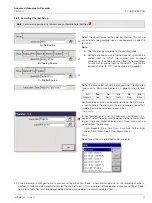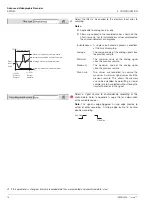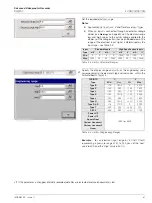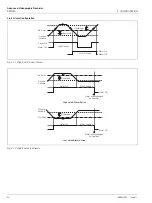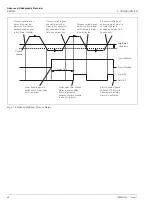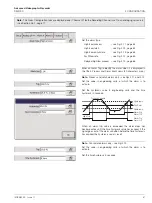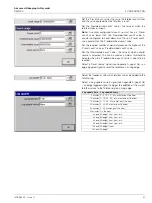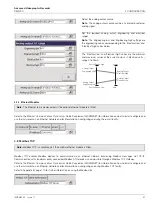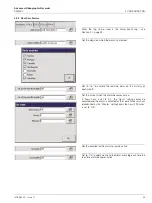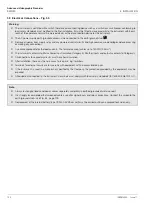
Advanced Videographic Recorder
SM2000
4 CONFIGURATION
88
IM/SM2000
Issue 11
Note.
Delayed process alarms only – see Fig. 4.15.
Set the value, in engineering units, at which the alarm is to
activate.
Set the hysteresis value in engineering units and the delay time
in seconds.
The delay time is the period of time for which alarm activation is
delayed after the enable signal is switched on. Once the delay
time has expired, the alarm operates in the same way as a
standard High/Low process alarm.
Note.
Rate alarms only – see Fig. 4.14.
A Rate alarm remains active until the rate has been within
limits for at least one complete Alarm Period.
Set the minimum or maximum amount of deviation allowed
within the Rate Alarm Period before the alarm is activated.
Set the time period over which the deviation is measured. For
High Rate alarms, the alarm becomes active if the value
changes by more than the deviation value within the alarm
period. For Low Rate alarms, the alarm becomes active if the
channel value changes by less than the deviation within the
alarm period.
Set the filter time to be used to reduce the number of spurious
alarm trips. The source signal is averaged over the filter period
prior to the rate alarm being determined.
Output
Alarm
Trip Point
Alarm On
Alarm Off
Time in seconds (s)
Timer
Started
Timer
Reset
Timer
Started
Hysteresis
Time
Elapsed
Timer
Reset
40
0
0
70
130


